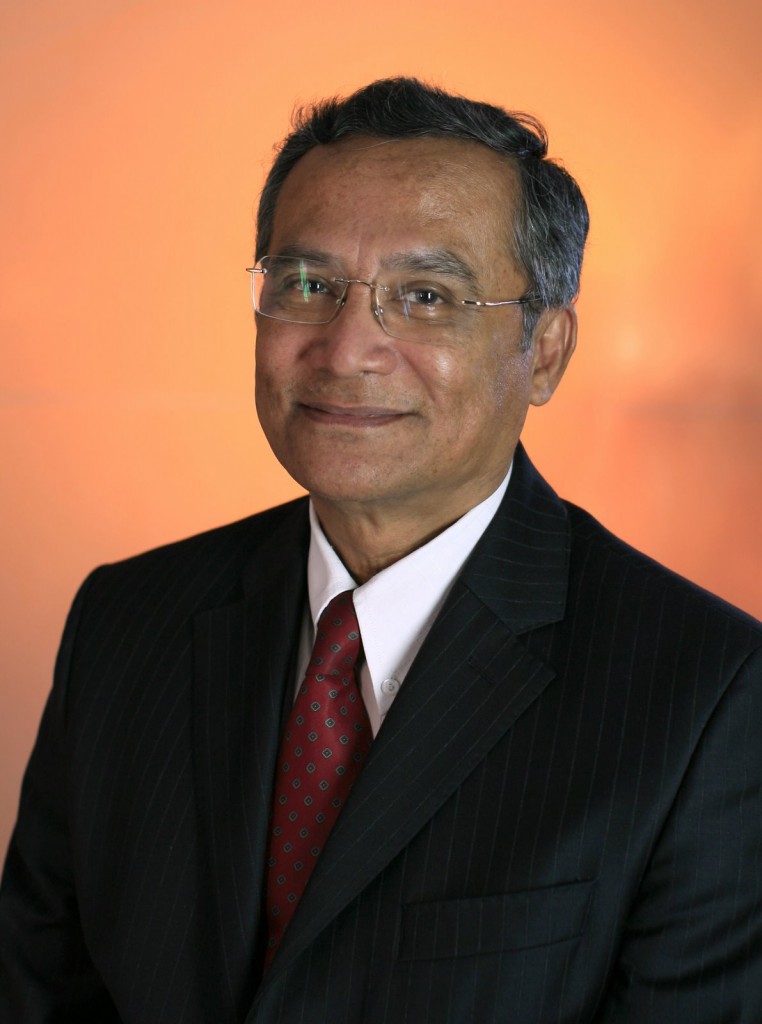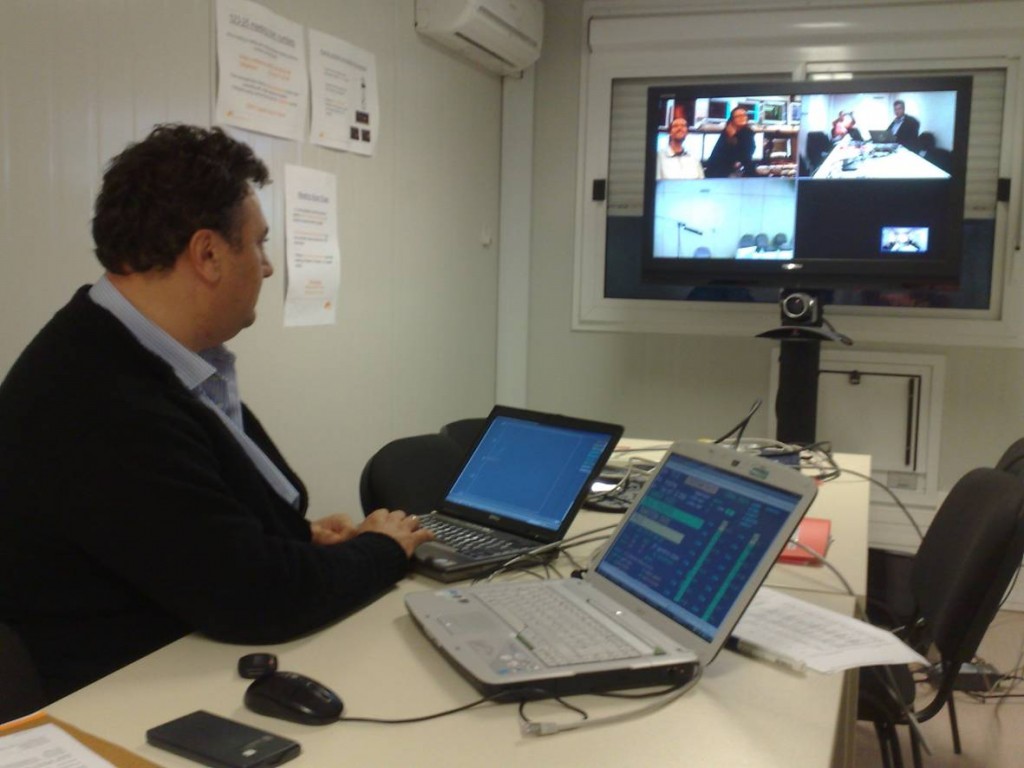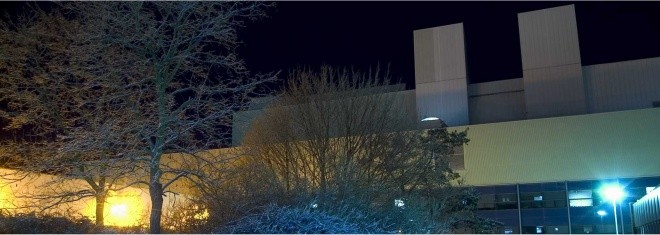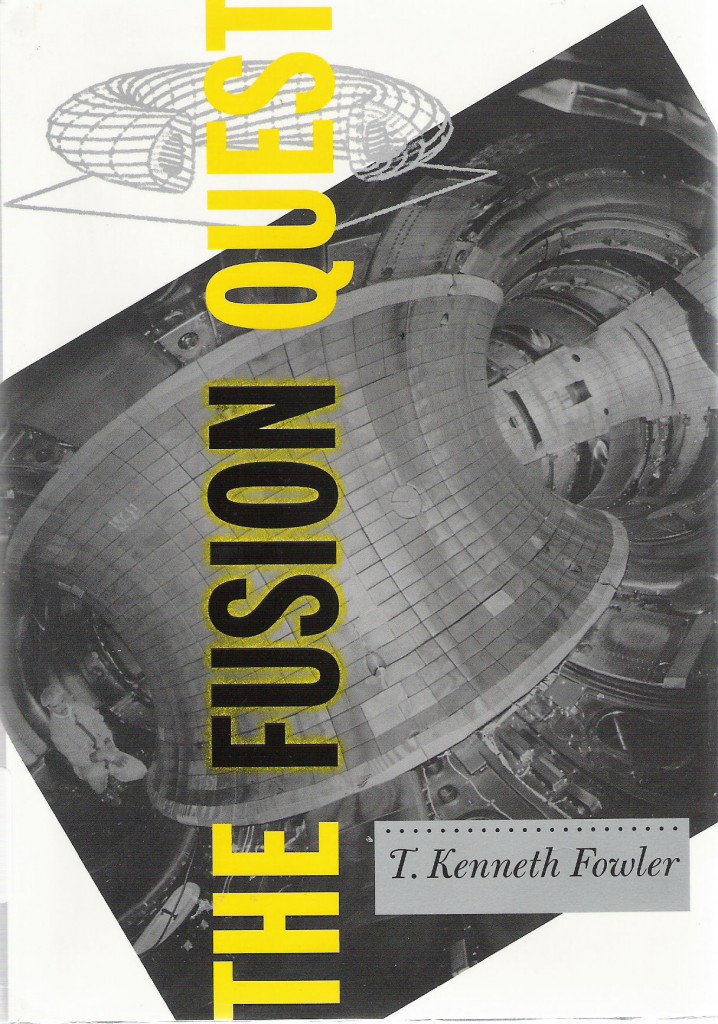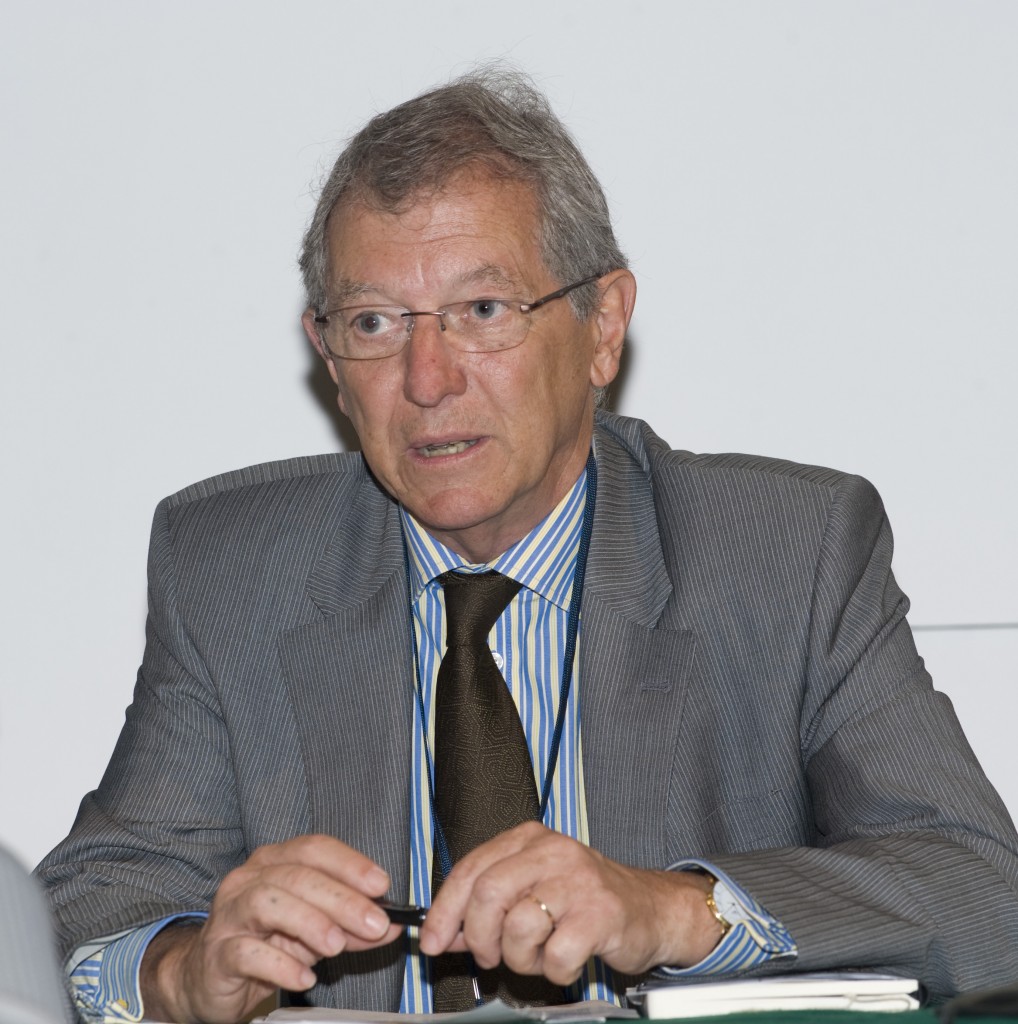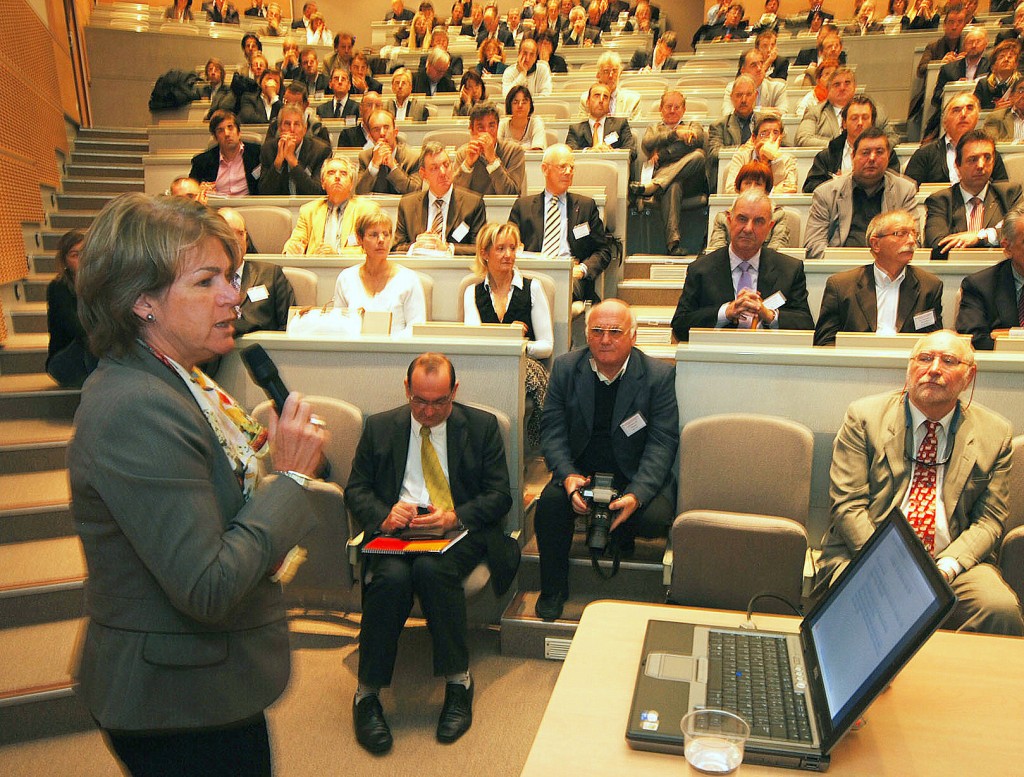The work load establishing the Baseline for ITER and preparing the Procurement Arrangements for signature has not given us much time to celebrate. But last month, we took the time to raise our glasses as the ITER Collaborative Network registered the one-millionth object stored in its database. As reported in Newsline 103, this number is a good scale to measure the growth and the size of the ITER enterprise.
The CODAC group these days is another good example of what it means to work within the environment of an international organization. Among the many close interactions carried on with experts from companies and institutes in Europe, the US, China, Japan, India and Korea, a contract is now running with the Chinese Institute of Plasma Physics (ASIPP) to develop a plant system simulator. The objective of the plant system simulator is to perform technology benchmarking as well as to obtain a tool to simulate different types of plant system instrumentation and control (I&C), e.g., the control of the coil power supply or the measurement of magnet temperatures. Two simulators based on different technologies have been delivered to the ITER site and are currently being integrated into the CODAC environment by our Chinese colleagues. The next step for ASIPP is to develop a prototype of a fast controller, to be used for any plant system involved in plasma control: diagnostics to measure plasma parameters, or actuators, like fuel pellet injectors, to change the property of the plasma. The ASIPP activity is one effort out of many to standardize ITER instrumentation and control equipment. The result will be the first release of a software and hardware tool kit, called CODAC Core System v.1, to be exported to all ITER plant system instrumentation and control developers in February next year.
Our department has made all necessary preparations for signing another three or even four Procurement Arrangements before the end of this year. Though the main effort in the department was focused on the completion of the documentation for the ITER Baseline, which was presented in the series of meetings we had last month, we were able to complete the technical work as well.
In preparation for the Diagnostic Neutral Beam Power Supplies Procurement Arrangement, progress meetings have been held in which the Indian Domestic Agency presented the layout study and the heat load assessment for the power supplies. The Procurement Arrangement with Japan for its part of the heating neutral beam power supply will now be divided into two parts; one for the Neutral Beam Test Facility (NBTF) and one for the power supplies for ITER.
As we are moving ahead with procurements, the Domestic Agencies are getting prepared to build the required test facilities for the components. The Indian Domestic Agency, for example, has just held the design review for the facility in which they will test ITER's diagnostic neutral beam, especially the features of the ion source including the accelerator and all the beam line components.
Likewise, initial operation of the radio-frequency resonant ring has started at the US Domestic Agency in Oak Ridge, Tennessee, on 21 October. This facility (see figure) will be used to test prototypes of various components of the ion cyclotron heating and current drive transmission line and matching system.
In Italy, the technical specification for the high voltage deck and transmission lines of SPIDER has been prepared. SPIDER is the test bed at the Neutral Beam Test Facility in Padua that will test the full size ITER ion source.
Last but not least, a personal word. After leading the diagnostics effort on ITER for more than 15 years, Dr. Alan Costley will be retiring as the head of the ITER Diagnostics Division at the end of this month. Dr. Michael Walsh from JET will take over from him as of 1 December. Speaking on behalf of the entire department, I want to thank Alan for his outstanding work and wish him all the best for the future.
|
The quest for fusion energy is a world-spanning endeavour. Though the spotlight may be on ITER at the moment, there are many laboratories in the east and west contributing to its success.
Laboratories around the world are running important experiments on aspects of ITER plasma physics and control in order to determine plasma performance for regimes with high radiation which will help to predict the performance of ITER. Other experiments deal with aspects of energy fluxes to plasma-facing components during a disruption which will help to plan for the mitigation of the effects of transient energy fluxes on ITER's in-vessel components.
Most of these experiments are carried out as part of an R&D program coordinated by the International Tokamak Physics Activity (ITPA). For urgent R&D issues, ITER staff also collaborates directly with researchers at tokamak facilities in the ITER Members states, planning and executing experiments together.
As part of this collaborative work, various experiments on controlling plasma instabilities known as Edge Localized Modes, or ELMs, have been carried out at DIII-D in San Diego and JET in the UK. Disruption physics and runaway electron deposition control was further investigated at the French tokamak Tore Supra last year.
Most recently, experiments were run at JET and the Alcator C-Mod Tokamak situated at the Massachusetts Institute of Technology (MIT) in the US. The focus of the work done at JET aimed at improving the database for power fluxes during disruptions and developing methods for controlling the deposition of energy of runaway electrons following schemes initially explored at Tore-Supra and JT-60U in Japan.
Runaway electrons are electrons that are accelerated to very high speeds—up to the speed of light during a disruption. These highly energetic electrons can cause significant damage when they impact onto the in-vessel plasma-facing components. Experiments in Alcator C-Mod addressed the issue of how plasma performance will be affected by injecting noble gases into ITER in order to maintain stationary power fluxes within the range that can be handled by the divertor target.
Both of these experiments carried out at JET and Alcator C-Mod inject impurity gases such as argon or neon into the plasma, but in very different amounts and timescales. "In the JET experiments, we tried to find an answer to the question of whether we can slow down runaway electrons by injecting these noble gases into the plasma," explains Alberto Loarte, Senior Scientific Officer in charge of Transport and Confinement Physics at ITER, who recently participated remotely in the experiments (see photo) which delivered "some promising" results. "In the Alcator C-Mod experiments, we investigated the injection of neon and argon into high confinement plasmas, as required in ITER, and studied the effect on plasma performance. So far, the results we have seen with injecting neon in Alcator C-mod are very encouraging. We managed to radiate a lot of the power that was injected into the plasma with radio-frequency heating without seeing the plasma confinement go down significantly."
Detailed analysis of the results is now in progress to draw quantitative conclusions and to plan for further experiments in these fields to address remaining open issues for ITER.
On 31 October, the UK's home of fusion research adopted a new name: the Culham Science Centre for Fusion Energy (CCFE).
The laboratory, based at Culham Science Centre in Oxfordshire, was previously known as UKAEA Culham, and has been the site of the UK fusion program since opening in 1960. It also operates the JET (Joint European Torus) experiment on behalf of its European partners.
The launch of CCFE is part of wider organizational changes at the UKAEA, whose nuclear decommissioning sector has been sold to Babcock International. The Authority has taken the opportunity to rebrand its fusion operation, giving it a clearer identity reflecting its mission.
"This is a strong identity that matches our status as one of the world's best fusion laboratories," said CCFE Director Professor Steven Cowley. "It also indicates our aspirations to be at the forefront of the realization of fusion as a major source of clean energy."
1997, the year T. Kenneth Fowler published The Fusion Quest, was a great year for the fusion community ... and also a terrible one.
In Culham, UK, the European JET was setting world records in fusion power production. In Japan, JT-60 had achieved the best combination yet of plasma temperature, density and energy confinement—the "triple product" that is the key to harnessing fusion energy.
In the international collaboration known as ITER, the detailed design phase was just completed to the satisfaction of its four original partners, the US, Russia, Europe and Japan. Thirteen years after its inception, the ITER Project appeared to be solidly on track.
In the US though, the tide was turning. Under pressure from a new majority in Congress, public spending was being drastically reduced and, like other research programs, magnetic fusion was getting the axe. For lack of proper funding, the Princeton Tokamak Fusion Test Reactor (TFTR), that had "definitely" (1) demonstrated fusion power in 1993, was closing.
As for the ITER Project, its very future was at stake. The program "could be killed by January," wrote the New York Times in May, 1997.
T. Kenneth Fowler, a thirty-year veteran of fusion research and the Director of fusion research at Livermore National Laboratory, wrote The Fusion Quest in this climate, as magnetic fusion's future, despite spectacular achievements, hung in the balance. His book reflects the mood of the fusion community at that time, both enthusiastic and preoccupied.
The Fusion Quest is about the forty years that saw fusion research go from tabletop devices to large machines like TFTR, JT-60, JET and eventually ITER—and, on the inertial fusion side, to the National Ignition Facility.
The book tells an exciting tale of complex science, sophisticated technology, and intricate politics. "Maintaining enthusiasm for fusion research among government officials," Fowler writes, "has never been easy." At every crucial moment though, "visionary leaders in [...] various governments" rose and sided with the fusion community "with little expectation of political rewards."
In 1996, Fowler, and his colleagues in fusion labs were wondering: "Will we [...] be able to carry through?" The years that followed brought an answer.
(1) JET was first to demonstrate fusion power in 1991, with a plasma containing 10 percent tritium. Two years later, TFTR used the "actual" fusion fuel, with deuterium and tritium in equal parts.
The Fusion Quest, T. Kenneth Fowler, The Johns Hopkins University Press, 1997.
|
Sir David King, former Chief Science Advisor to the UK government under Tony Blair and Gordon Brown, and Head of the Office of Science and Technology from 2000-2007, has been made Chevalier de la Légion d'Honneur, receiving one of France's highest honours.
Sir David has been an outspoken and often controversial expert on climate change, describing global warming as "...probably the most serious [problem] that the human race has, collectively, ever faced." In 2008, he co-authored The Hot Topic to bring the issue to the political and public forefront.
He is a strong supporter of fusion development as a clean solution for future energy needs. As Science Advisor, he chaired a committee on the future of fusion that issued the King Fast Track Report to Fusion Power.
"I was one of those who were somewhat sceptical about fusion," says Sir David in a recent interview at the Culham Centre for Fusion Energy (formerly UKAEA Culham) that is this week's featured Newsline video. "It was that work with a group of experts that led me to believe that fusion power stations are a possibility in the future ... not a reality, not 100 percent certainty, but a real possibility. And if there is a real possibility, it is such an enormously important large-scale energy source for future populations, that it seemed really worthwhile investing in ..."
Sir David has published over 500 papers relating to research in chemical physics and on science and policy. Currently, he is the Director of the Smith School of Enterprise and the Environment at Oxford University, and Director of Research in Physical Chemistry at Cambridge University.
There is more to Aix than fountains, sidewalk cafés, elegant 18th century townhouses and nonchalant literature students. The city is now at the heart of a new administrative division called the Greater Aix Council (Communauté du Pays d'Aix, or CPA)—a territory that federates 34 towns and villages and hosts such high-profile companies as Eurocopter and ATMEL; the largest nuclear research centre in France, Cadarache; some of the largest commercial malls in Europe; and a network of more than 30,000 businesses, both large and small.
For several of these businesses, whether industry, high-tech or service-oriented, CEA-Cadarache, the ITER Project and the planned "Valley of the Energies" represent major opportunities for development.
Last Thursday, some 220 managers and professionals from CPA gathered at the Château de Cadarache to participate in a "get to know each other" meeting. "We received more than 400 applications," said Lionel Minassian, the Director of CPA's Economic Development Agency. "Our entrepreneurs are really eager to work with CEA and ITER."
Before embarking on a visit to the ITER work site and a tour of CEA-Cadarache installations, the participants in the meeting sat through presentations by Serge Durand, Director of CEA-Cadarache and Françoise Flament, Head of the Contracts & Procurement Division at ITER. Françoise stressed that out of EUR 62 million of contracts that were committed by ITER since January 2009, EUR 15 million were concluded with companies located in the PACA region.
Maryse Joissains-Masini, the Mayor of Aix and President of CPA, paid a quick visit to the meeting and reaffirmed that "one of the strategic objectives of Greater Aix is to be a partner in the development momentum that CEA and ITER are creating in the region."
Last year saw the passing of the last surviving French WWI veteran. His name was Lazare Ponticelli and he was 110 years old. For the first time in 90 years, the familiar figures of frail old men sitting by the Unknown Soldier Memorial will be absent from the 1918 Armistice ceremony on 11 November.
The departure of the last of the "Poilus"—the "Hairy Guys," as WWI veterans were nicknamed—has presented France with the opportunity to attach a new meaning to the 11 November celebrations. The holiday that commemorated the Allies' victory will from now on be a celebration of French-German friendship.
A quarter of a century ago, President Mitterrand and Chancellor Helmut Kohl stood at the Verdun battlefield, silent and holding hands. On Wednesday, French-German friendship will take on a new expression as Angela Merkel speaks at the Arc de Triomphe in Paris by the "eternal flame" that burns over the tomb of the Unknown WWI Soldier.
|


